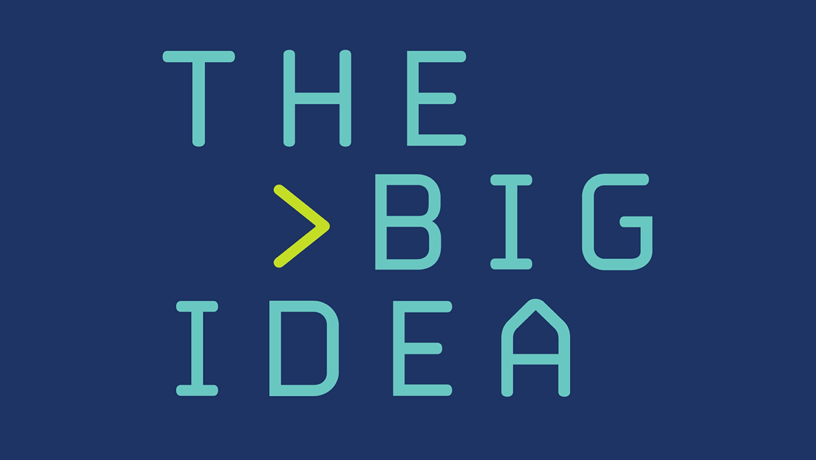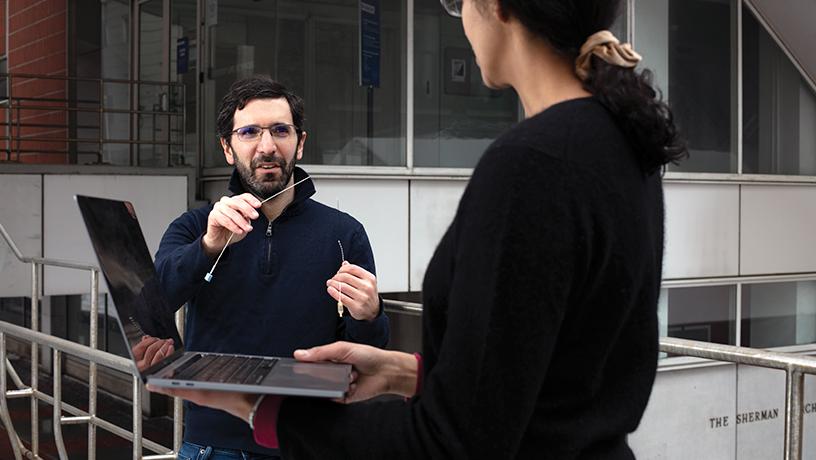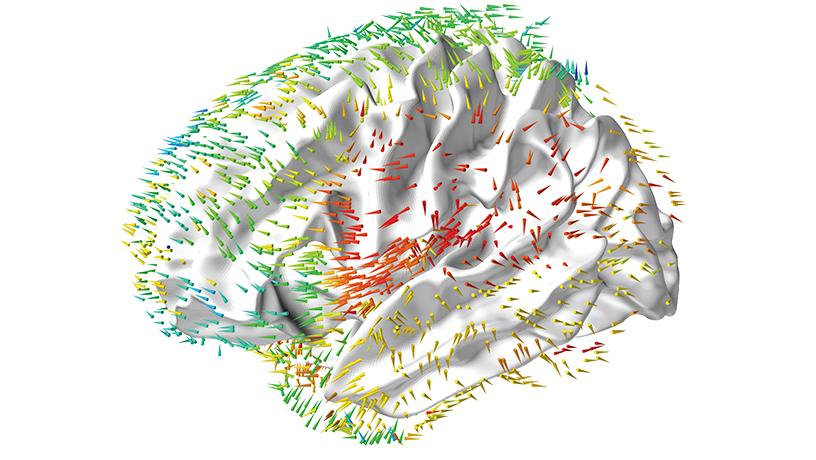How Memory Makes Us Human
Professor Joshua Jacobs uses virtual and augmented reality to understand the brain

A series of conversations on pioneering research

Josh Jacobs, associate professor of biomedical engineering with a student.

Arrows showing the direction of wave propagation in the human brain during memory processing.
Neuroscience research generally takes two basic approaches. In one, focused on people, researchers can analyze humans performing complex tasks but typically are limited to collection of relatively low-resolution data via noninvasive techniques such as electrodes outside the skull. The other investigates animals, where researchers can gather high-quality data directly from implanted electrodes but are limited to studying relatively simple behavior.
In the lab of Joshua Jacobs, associate professor of biomedical engineering professor, researchers bridge the two. Jacobs, who investigates the mechanics of memory to address disorders like Alzheimer’s disease, works with epilepsy patients who require surgically implanted electrodes to monitor and study their seizure activity. Jacobs gives these patients cognitive exercises designed to illuminate not just how the human brain processes memory but also what about these processes is uniquely human.
What’s the big idea animating your work?
A lot of epileptic seizures involve an area of the brain called the hippocampus; the hippocampus is a key part of the brain that we focus on as this region involved in memory and navigation.
We know a lot about the hippocampus from animals, such as how rats navigate mazes. Rats show us that the hippocampus plays an important role in spatial navigation, and we think it later evolved to support memory more broadly. If you’re an animal running around, it’s important to keep track of where you’re located— what locations are dangerous or safe.
In my lab, subjects perform tasks with both spatial and memory components, some similar to tasks in rat studies and others that are really hard or impossible for rats to do, so that we can try to understand humanlike brain patterns but also draw from animal research as well.
That’s what really gets me going. We know the human brain isn’t just a larger version of the rat brain; we’re not just big rats.
What’s surprised you most in your findings?
Just how many differences we’ve found in humans compared with animals. We’ve tried to design every study to find commonalities between humans and animals, and in just about every study, we’ve found new features that are quite a surprise to us.
For example, in rats, place cells [brains cells that represent specific places in the world] are overwhelmingly focused on where rats are located at any given moment. In humans, place cells are often focused not on where people are located but on where they are trying to go. So humans place cells are more flexible: a person can be over here but thinking about a remote location over there. This kind of di erence may reflect how we think more about where we are planning to be in the future and what we might do there.
What’s next for your research?
A lot of the patients we work with are confined to hospital beds because of epileptic seizures, so we use virtual reality navigation with them.
In a new project, we are studying real world navigation. We’re having subjects walk around using augmented reality, which allows us to overlay digital features onto the real world. Implanted inside each subject’s skull is a brain-recording system with a little battery and a small wireless connector that beams signals from the system to the internet. We’re collecting data from them right now.
